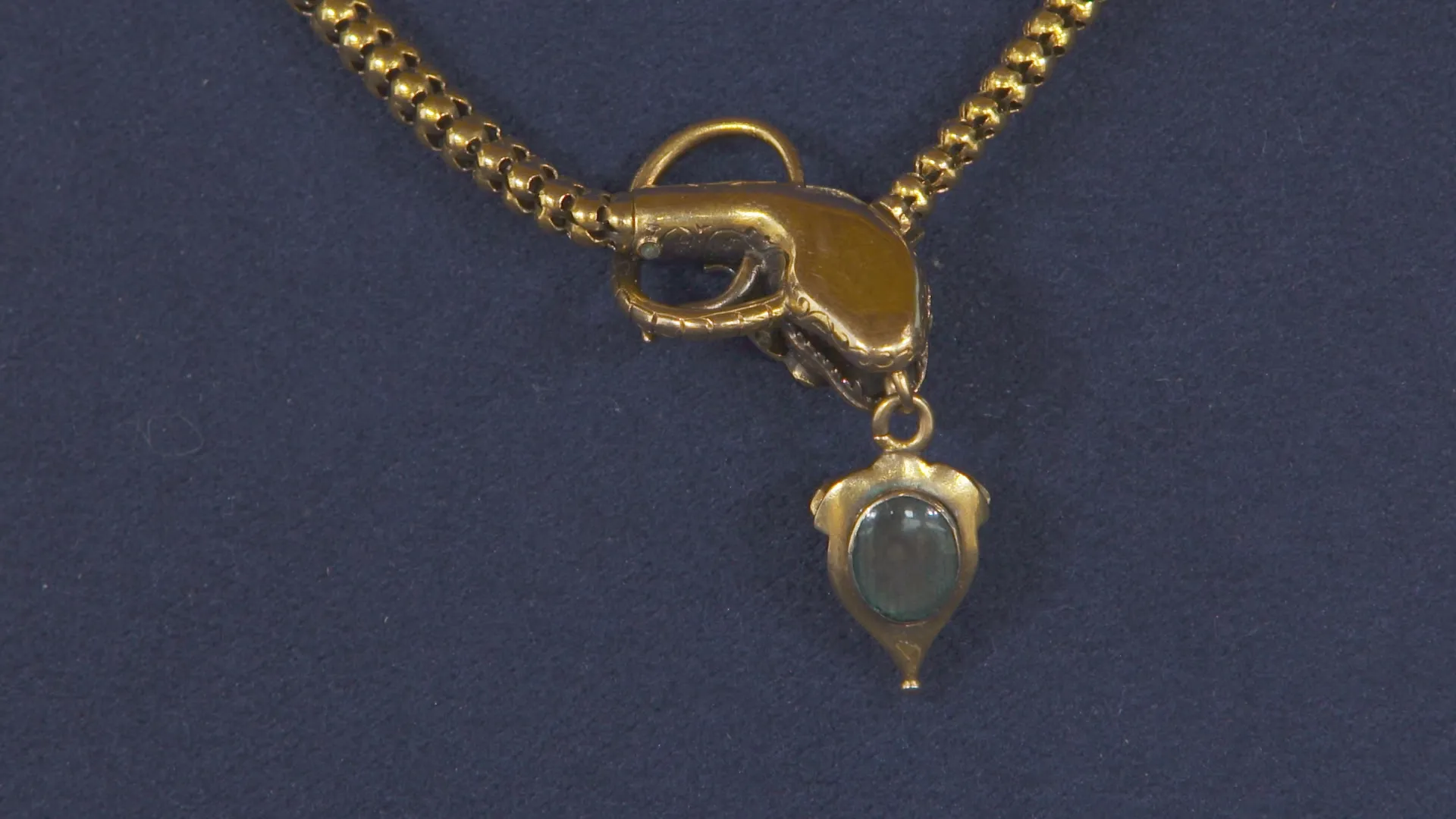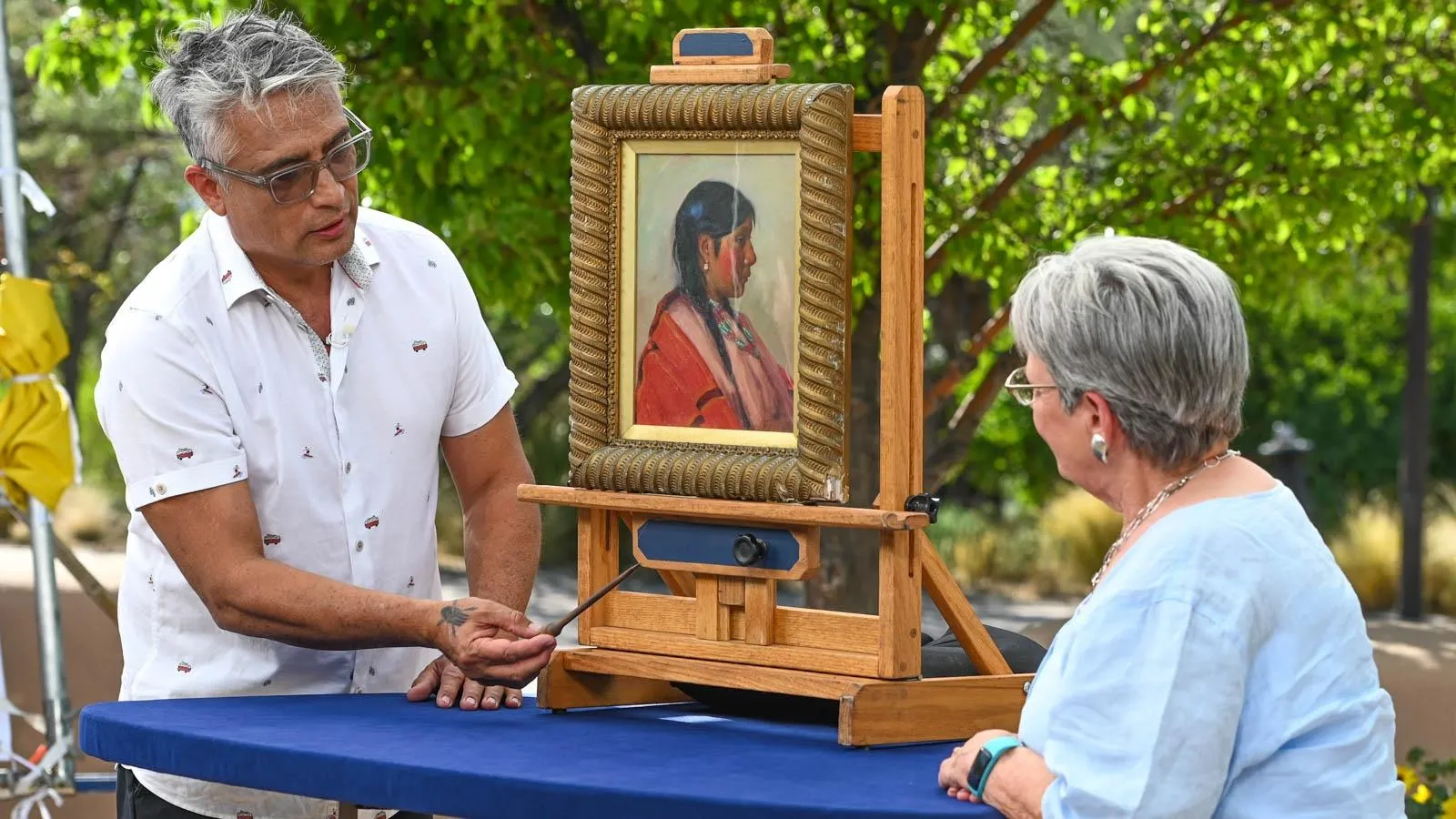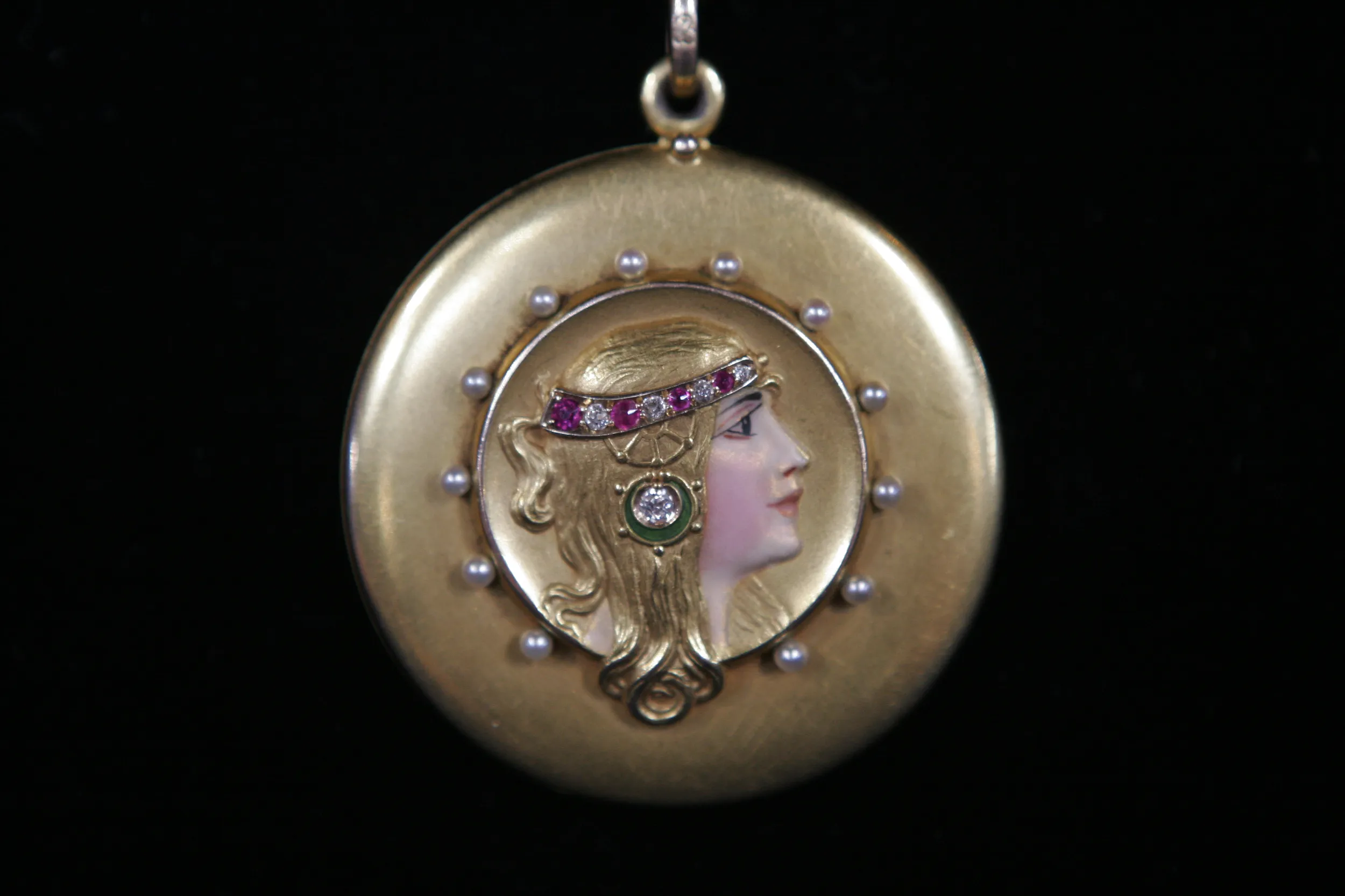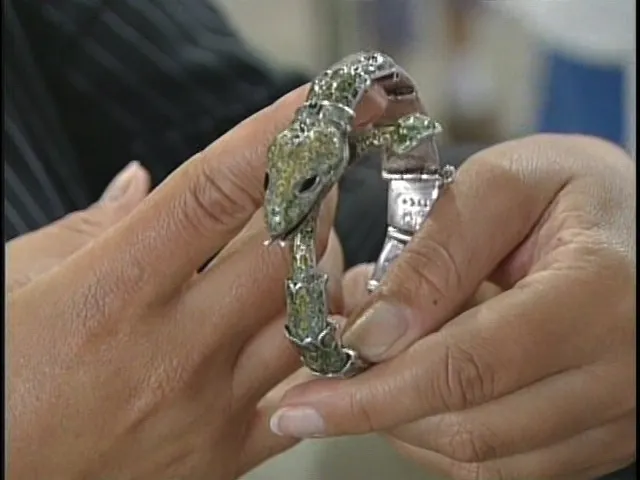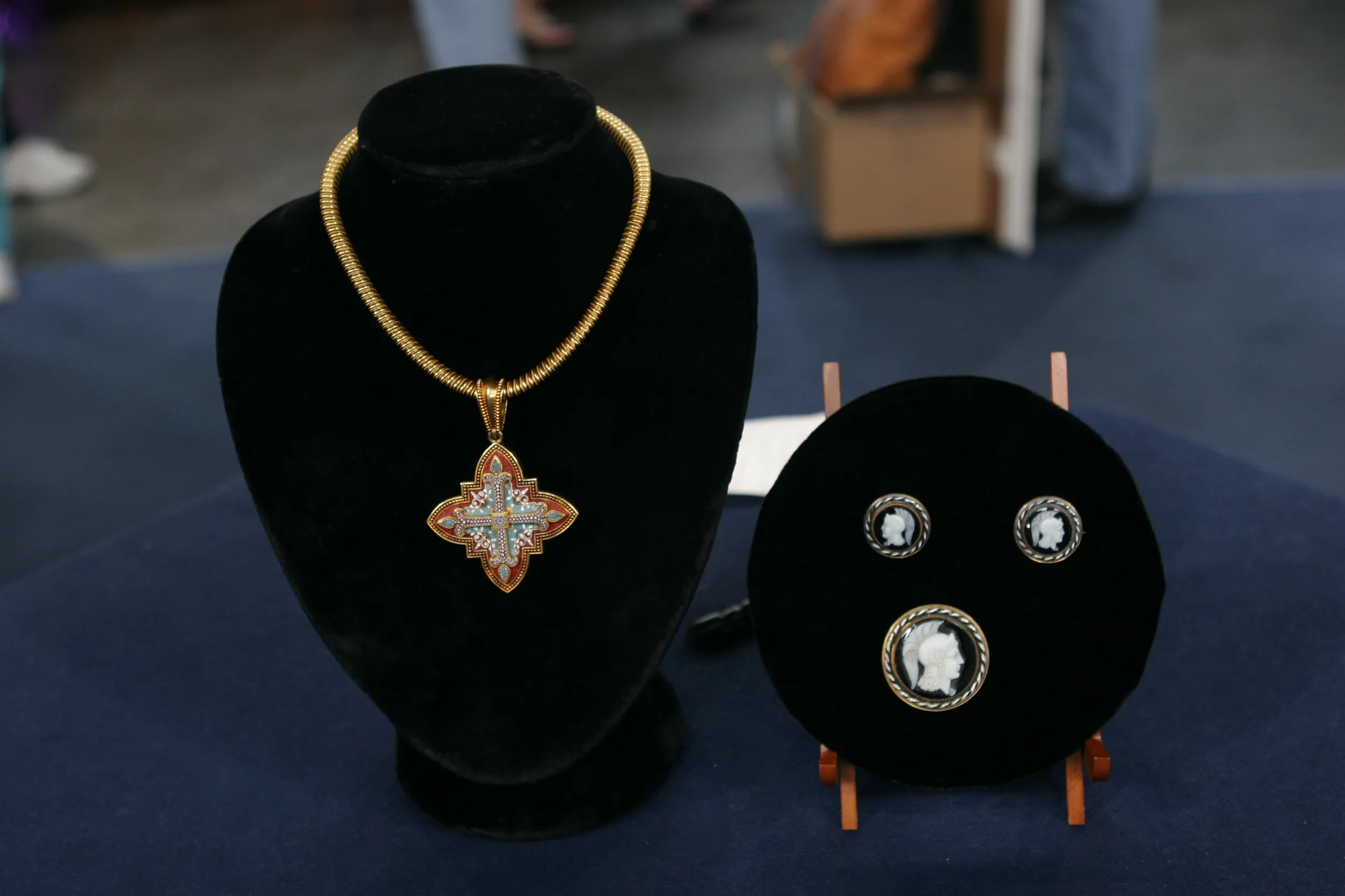GUEST: I got that from my grandmother. I understand she was from the U.K.
APPRAISER: Any idea of how old it is?
GUEST: I'm guessing it's maybe a turn of a century or someplace around there.
APPRAISER: It's a serpent necklace. The symbolism of this piece is one of love. It hearkens back to the Greek images of Aphrodite with her companion serpent entwined, and it suspends a heart. Queen Victoria got married in 1840.
GUEST: Mm-hmm.
APPRAISER: And she wore as her engagement ring a serpent ring from Albert set with an emerald. And what we have here is a love token, a love necklace, from 1840s through the 1850s, give or take. It is gold, I tested it.
GUEST: Mm-hmm.
APPRAISER: It was higher than 14 and lower than 18.
GUEST: Cool.
APPRAISER: And 15-karat is an English assay, so...
GUEST: Oh.
APPRAISER: ...all the pieces fit.
GUEST: Yeah, they do.
APPRAISER: It's a graduated, highly flexible serpentine chain made of separate links. It's set in the head with emeralds and diamonds. The eyes are rubies. Now, suspending from the serpent's mouth is a heart. And if I turn the piece over, you'll see, on the back of the heart...
GUEST: Mm-hmm.
APPRAISER: ...you'll see a little chamber. And it might be foggy
GUEST: Yes, I was wondering what that was.
APPRAISER: There's an oval panel of hair that's been woven into a fabric like the finest silk.
GUEST: Oh.
APPRAISER: And that is the hair of the loved one of the wearer of this necklace.
GUEST: Wow. Had no idea.
APPRAISER: Serpents were a, a symbol of love and a, a symbol of wisdom, as well. Very popular in the Victorian era. This is a nice early example. It's in perfect condition.
GUEST: Good.
APPRAISER: In a retail setting, this necklace would bring $8,000 to $10,000.
GUEST: (gasps) Oh, really?
APPRAISER: Yeah. It's a really nice one.
GUEST: Oh, well, thank you.

